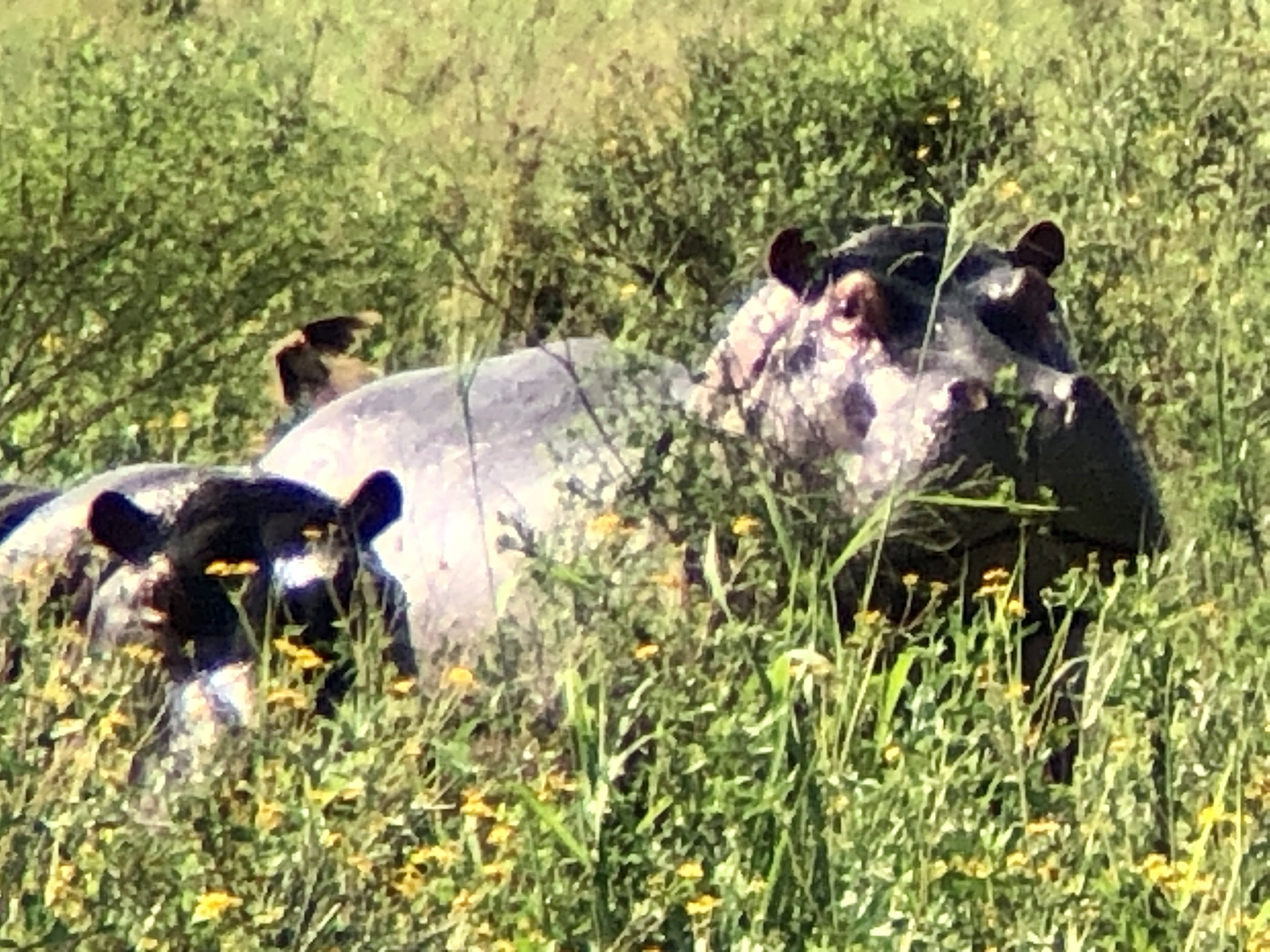MERU SLOPES SAFARI ITINERARY
Tanzania
One person, 6 nights accommodations (tents and simple rooms), all food and water, entrance fees, and guide. $950.
I was greeted at the Arusha airport by Immanuel of Meru Slopes and brought to my hotel where I stayed overnight on Christmas Day. Immanuel saw me off in the morning and I was the only passenger on the way to Lake Manyara, about a two hour drive.
Day 1
Lake Manyara National Park
We stopped at Fig Tree Inn and a couple from Paris joined us. On day one, I saw a giraffe, baboons, and lions in trees! — the calling card for Lake Manyara.
I also enjoyed the views of the Great Rift Valley escarpment. Ernest Hemingway is reported to have called the lake and valley “the loveliest I had seen in Africa”. The advantage of Lake Manyara is that it is close to Arusha and compact so it makes an easy venue for wildlife viewing for anyone with limited time. If you have limited time: FIND MORE TIME.
Day 2
Serengeti National Park
Leaving Fig Tree Inn, we stopped at the rim of Ngorongoro Crater and traveled through a section of the Serengeti where the Masai are allowed to live and raise cattle. Robed and always with a staff, Masai culture survives both in Serengeti and in Dar and Zanzibar.
Serengeti is famous for the wildebeest migration; I missed it by a month or more but it is just a reason to return.
We saw giraffes, zebras, warthogs and three lions at a fresh water buffalo kill. We also saw one or two Secretary birds before camping for the night.
My mattress made my night comfortable; I was a little concerned about the sanitation of the shared rest room tow which I had a walk of a hundred yards with hyenas scampering around the camp.
Days 3 & 4
Serengeti National Park/Ngorongoro Conservation Area
Our itinerary claimed that Ngorongoro Crater is the largest collapsed volcanic crater in the world — in other words, a caldera. That, however is not the case. Yellowstone is larger but there you don’t feel like you are in a crater. At Ngorongoro you do. The descent is deep and gave me a feeling of going back in time. The bowl shape helps to concentrate animals. When four lionesses passed alongside our vehicle, we were giddy. We also spotted a black rhino, hippos, and elephants, one of whom seemed a bit annoyed with us and made our vehicle seem tiny — and a bit vulnerable.
Climbing out of the crater offered the change to view the beautiful Yellow Acacia tree. We spend the night at Fig Tree Inn, a simple accommodation (no A/C) but a very attentive staff who ensured I got some items that I had carelessly left.
Day 5
Tarangire National Park
Tarangire is the home of the warthogs. We saw a hundred if we saw one. The largest family of elephants of our four days also surrounded us to eat in the mid-morning shade of baobabs, acacias, and sausage trees. This was probably the highlight of the day. Giraffes traveled in larger groups here as well. The amazing baobab tree, Africa’s Tree of Life, dwarfed these 15 foot high creatures and captured my imagination with their scale: towering, massive, ancient.
We returned to Arusha, where Immanuel again greeted me. Before settling in at the Arusha Tourist Inn and I bade farewell to my follow travelers who whom I shared an indelible experience.












